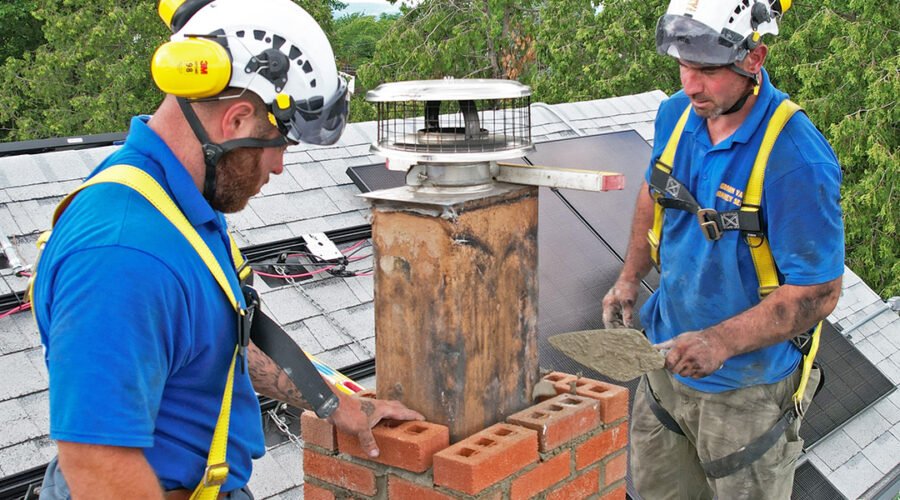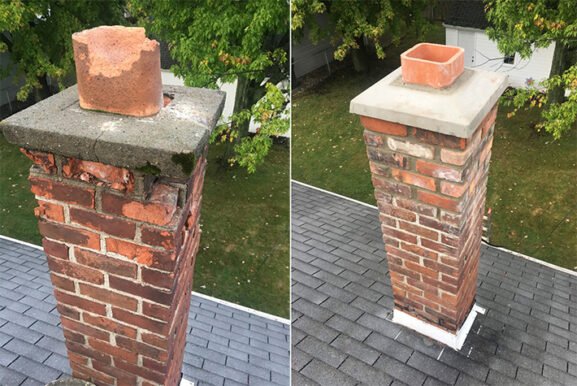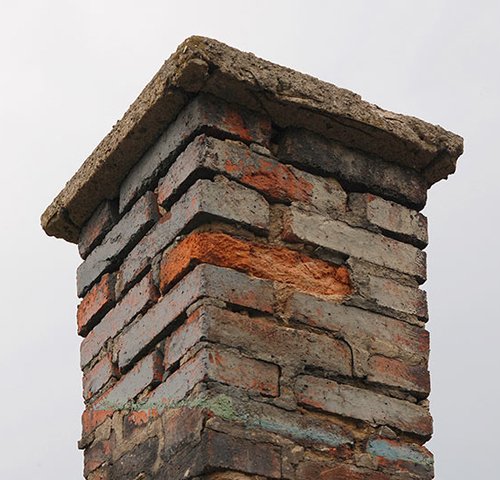Chimney Pointing Inspection: Ensure Safety, Prevent Damage, and Save on Repairs
Key Takeaways
- Chimney pointing inspections performed regularly help reveal gaps in mortar along with fractures and breakdown that prevents expensive repairs and structural faults from happening.
- Annual inspections of brick pointing should be performed regularly to counter the quick deterioration caused by weather exposure in locations with intense climate conditions.
- Pointing damage which receives no attention permits water penetration that creates stability problems and safety risks consisting of chimney fires and carbon monoxide leaks from chimneys.
- Through professional inspections homeowners gain comprehensive reviews and ensure safe procedures and superior repointing techniques which contribute to extended chimney utility.
- The early detection of problems through pointing durability evaluations and seal assessments allows you to keep your chimney stable while saving financial costs.
- Professional trust leads to safer long-term chimney maintenance through certifications from organizations such as CSIA that establishes proper standards for staff training.
Proper maintenance of chime stone structures never exists solely for looks because this practice provides both safety features and optimal system performance. Brick mortar called pointing shows signs of deterioration when exposed to weather elements and normal brick deterioration occurs. The necessity of a chimney pointing inspection emerges at this point. Early identification of problems through a chimney pointing inspection enables preventive measures that stop both expense restorations and building harm in the future.
What Is Chimney Pointing Inspection?
A professional inspector evaluates brick mortar health during chimney pointing examinations. Weather exposure throughout time causes pointing damage to the chimney leading to breaks and separations in the mortar that weakens the overall structure. The inspection enables us to check pointing stability while finding spots that require reinstitution and resolve potential problems before serious deterioration occurs.
Professionals conduct a detailed masonry pointing check during inspections. They look at specific signs like pointing joint cracks, brick pointing wear, and weathered pointing repair needs. These indicators help determine if pointing restoration is necessary to maintain the chimney’s structural integrity.
Key elements of a chimney pointing inspection:
- Pointing mortar gaps: We check for visible gaps or missing mortar between bricks, which can affect the chimney’s stability.
- Pointing seal inspection: Experts examine the seal and strength of the existing mortar, ensuring it prevents water penetration.
- Pointing damage evaluation: Cracks, erosion, and loose mortar are assessed to understand the extent of wear.
- Repointing needs: If the mortar has weakened significantly, repointing may be needed to restore durability.
Neglecting an inspection can result in more extensive damages, such as water leaks or even structural collapse. A professional inspection also ensures compliance with safety standards advised by organizations like the Chimney Safety Institute of America (CSIA).
Unique challenges for US homeowners
In the US, regions with extreme weather changes—like freezing winters or hot summers—can accelerate brick pointing wear and mortar damage. Regular inspections are particularly vital in such climates to safeguard chimneys from avoidable repairs.
Investing in a professional chimney pointing inspection tackles small issues before they lead to costly repairs. Proper assessments also extend the chimney’s lifespan while keeping our homes safe and efficient. For more on fire safety, visit the National Fire Protection Association.
Importance Of Chimney Pointing Inspection
Regular chimney pointing inspections ensure the mortar between the bricks stays intact, preventing long-term structural and safety risks. Weather, time, and regular use contribute to wear, making these checks essential for maintaining your chimney.
Preventing Structural Issues
Ignoring brick pointing wear or joint cracks can weaken the chimney’s overall structure. Over time, pointing mortar gaps allow moisture to seep in, leading to internal damage like frost expansion during colder seasons. This weakens the chimney base and increases the risk of collapse.
- Spot Early Problems: A pointing damage evaluation helps catch small cracks or worn mortar before they grow into larger structural threats. Early detection equals minimal repair costs.
- Combat Weather Damage: Frequent weather changes in the US cause wear. Inspections ensure weathered pointing repair is addressed promptly, avoiding water penetration and brick dislodgement.
- Protect Property: A weakened chimney threatens your home and exterior walls. Prevention always beats large repair bills.
Professional inspections include pointing seal inspections and pointing durability assessments to ensure the chimney withstands pressure from time and elements.
Enhancing Safety
Cracked mortar or pointing gaps can lead to serious safety hazards. Smoke, carbon monoxide, or embers escaping through the gaps pose threats to health and property. Structural fragility also increases fire risks.
- Fire Hazard Minimization: Masonry pointing checks ensure chimney integrity, eliminating risks of internal wood frame contact with escaping heat or flames. Organizations like the Chimney Safety Institute of America highlight the importance of this for fire prevention.
- Carbon Monoxide Containment: Properly sealed pointing prevents dangerous gases from leaking into living spaces.
- Secure Heavy Elements: Strong mortar keeps bricks firmly in place, reducing risks of falling debris. Combine this with regular repointing needs evaluations to ensure your chimney remains solid.
Annual inspections safeguard your family and your home. A small investment saves you from potentially hazardous scenarios.
Increasing Longevity Of Your Chimney
Routine pointing restoration needs assessments and maintenance extend your chimney’s operational life. Regular repointing and damage prevention ensure the structure remains usable for decades.
- Moisture Prevention: Gaps in pointing deteriorate the brick’s foundation. Inspecting these issues prevents long-term water damage that leads to expensive restorations.
- Improved Durability: Pointing durability assessments confirm that the mortar bonds well with the bricks, maintaining strength over time.
- Cost-Effective: Addressing pointing gaps early keeps repairs affordable and more manageable than full-scale replacements.
Reliable chimney maintenance protects your investment. Organizations like the National Fire Protection Association recommend inspecting masonry a minimum of once yearly to support long-term resilience.
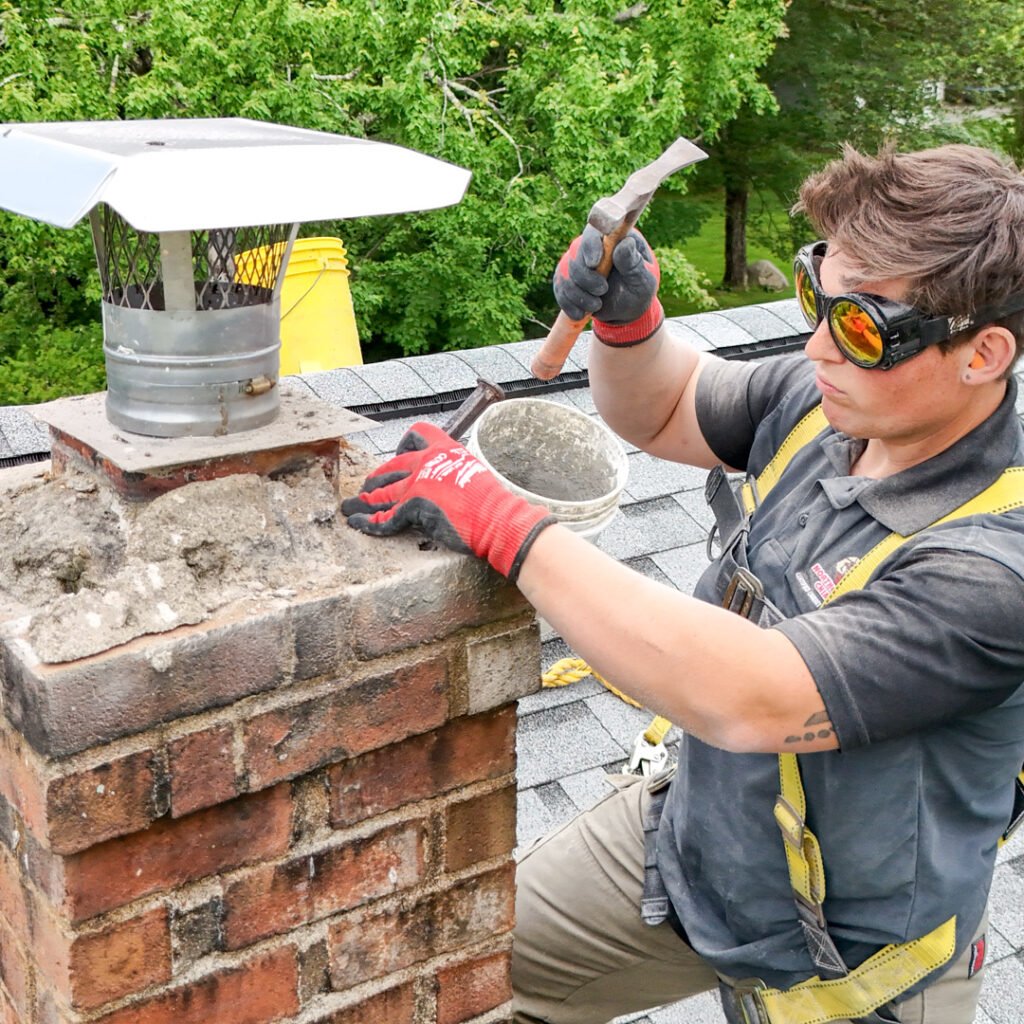
How To Conduct A Chimney Pointing Inspection
A chimney pointing inspection helps identify pointing mortar gaps, joint cracks, and signs of pointing damage. Regular assessments protect your home from weather damage and ensure the durability of your chimney’s structure.
Tools And Equipment Needed
Conducting a chimney pointing inspection efficiently requires the right tools. Here’s what professionals typically use:
- Flashlight: Illuminates hard-to-see areas between bricks for detecting pointing joint cracks.
- Binoculars: Checks chimney conditions from a distance when climbing isn’t possible.
- Trowel or Scraper: Tests pointing mortar gaps to evaluate looseness or damage.
- Moisture Meter: Identifies potential moisture trapped within the masonry.
- Ladder: Provides proper access to the chimney for close inspections.
- Safety Gear: Helmets and gloves guard against accidents during roof access.
Weather-resistant clothing is essential for outdoor inspections, especially during colder seasons. Using these reliably ensures a thorough examination of the chimney’s masonry pointing condition.
Steps To Inspect Chimney Pointing
Follow these steps to assess your chimney pointing for wear or damage:
- Visual Inspection: Examine pointing for visible cracks, voids, or weathered sections. Focus on identifying brick pointing wear and gaps in the mortar.
- Pointing Durability Assessment: Use a scrape test where mortar appears loose or deteriorated, confirming areas with repointing needs.
- Check for Moisture Issues: Look for green stains or white efflorescence around pointing, which signal water absorption.
- Pointing Seal Inspection: Evaluate the integrity of the seal between bricks. Weak seals often worsen during extreme weather.
- Note Any Structural Issues: Observe leaning bricks or bulging areas that may indicate severe mortar weakening.
- Record Findings: Document any signs of pointing restoration needs and areas requiring pointing damage evaluation.
Always leave repairs to trained professionals, as improper fixes can increase risks. For guidance on safe chimney practices, refer to the Chimney Safety Institute of America (CSIA) and the National Fire Protection Association (NFPA).
Signs Your Chimney Needs Pointing Repairs
Spotting chimney issues early saves money and prevents bigger problems. Let’s explore the telltale signs that your chimney might need pointing repairs.
Cracked Or Missing Mortar
Cracks or missing sections in the pointing mortar indicate the need for repair. Over time, weather conditions like rain, snow, and heat can weaken the mortar binding the bricks. Without a proper seal, gaps can form, compromising the chimney’s durability.
Look closely for pointing joint cracks and gaps during a masonry pointing check. Missing mortar isn’t just an eyesore; it leaves the chimney vulnerable to moisture infiltration, risking internal damage and costly weathered pointing repair.
Ignoring these signs may result in repointing needs growing more severe. It’s best to act swiftly before the chimney’s structure gets worse.
Water Leaks And Damage
Signs of water leaks around the chimney signal trouble. Water can seep through mortar gaps, causing stains, mold, or even rust on nearby surfaces. If left unchecked, these leaks lead to significant structural and interior damage.
During a pointing damage evaluation, professionals check for moisture marks, soft bricks, or flaking mortar. These issues typically point to compromised pointing seal inspection results.
Weather in the US, especially in colder climates, can accelerate freeze-thaw damage within chimneys. Investing in timely pointing restoration needs keeps moisture at bay and protects your home.
Visible Structural Instability
Structural issues like leaning chimneys or uneven bricks are red flags. These problems often stem from deteriorating brick pointing wear and weak mortar joints. A lack of sturdy pointing directly impacts the chimney’s stability.
Common instability clues include misaligned bricks, cracks running along the chimney, or chunks of mortar piling up around the base. Specialists evaluate these faults during a pointing durability assessment to restore safety.
The risks of collapse are high when visible deterioration is ignored. Identifying instability early allows for efficient weathered pointing repair and avoids additional long-term costs.
Benefits Of Hiring A Professional
A certified professional brings expertise and equipment that guarantees a proper repointing job. They perform detailed pointing mortar gap inspections and evaluate pointing damage accurately.
Professionals also ensure compliance with standards set by the Chimney Safety Institute of America (CSIA). Hiring an expert saves homeowners time, stress, and the heartbreak of botched repairs.
Also, trained specialists understand extreme US weather patterns and their effect on chimneys. They address pointing restoration needs while recommending measures to minimize future damage.
Trusting skilled pros reduces safety risks by ensuring precise repairs. For expert chimney care, find a certified professional through resources like CSIA or explore fire safety tips from the National Fire Protection Association.
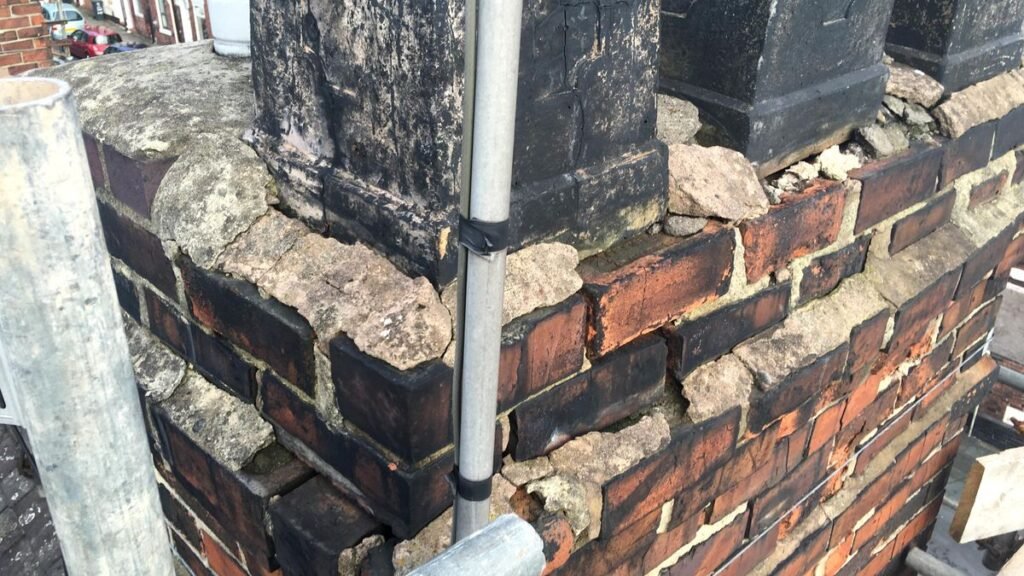
Conclusion
Maintaining safety together with a prolonged lifetime of masonry chimneys depends on routine inspections of chimney pointing. Detecting early problems with both pointing mortar gaps and pointing joint cracks and brick pointing wear enables us to stop costly maintenance and prevent physical destruction to the structure.
The masonry pointing check evaluates durability and protection aspects to make chimneys strong against weather elements while maintaining stability. Inspections reveal the locations where repointing work is necessary to perform pointing restoration repairs before harsh weather deteriorates the damage. Tankards create quick mortar deterioration in US areas that typically face long cold seasons and abundance of moisture so yearly inspections must remain essential.
- The pointing seal inspection evaluates the strength of mortar bonds to stop water seepage throughout the structure.
- The inspection of pointing damage comprises a close examination of cracks and gaps in mortar to determine necessary repair work.
- An evaluation of weathered pointing enables professionals to detect exposed areas so maintenance can be performed promptly.
Professional inspectors who hold certificates from the Chimney Safety Institute of America (CSIA) possess the expertise needed to address specific homeowner challenges which occur throughout the United States. Professional inspectors protect homeowners by maintaining standards and identifying potential risks that could result in carbon monoxide leakage or chimney fires. Learn more about CSIA.
Annual assessments keep minor issues under control, allowing us to avoid more significant concerns like internal moisture damage. Instead of DIY fixes, trusting professionals ensures repairs are effective and safe.
To ensure long-lasting chimney integrity, following guidelines from respected groups like the National Fire Protection Association (NFPA) is invaluable. Professionals can’t ensure safety if we neglect inspections. Visit NFPA for detailed resources.
Frequently Asked Questions
What is chimney pointing, and why is it important?
The materials used for sealing the mortar between chimney bricks are known as chimney pointing matter. Exposure to weather along with regular use and normal aging of the mortar leads to its deterioration. A durable chimney requires proper pointing to sustain its structural components and protect against wet damage which prevents expensive maintenance expenses.
When should I check the condition of the pointing on my chimney?
An annual chimney inspection allows you to detect household chimney pointing issues in their initial stages. The regular schedule of inspections becomes crucial for areas experiencing severe weather conditions because it helps protect safety and maintain chimney longevity.
Which components indicate that the chimney pointing is deteriorating?
Signs that indicate chimney pointing damage include broken or non-existent mortar and visible cracks along with detectable gaps and leaking water and unstable structural elements. The continuation of such signaling will result in severe events like chimney collapse alongside moisture intrusion.
What are the reasons to select an expert professional who performs chimney pointing inspections?
Mortar assessment requires combination skills of professional tools with expert knowledge and official training from certified professionals. Validation against safety guidelines and correct repair services help professionals avoid upcoming issues after they perform inspections. Improper self-executed repairs of damaged building components will actually make the damage worse.
Can damaged chimney pointing cause safety risks?
Broken or damaged mortar admits escape of smoke along with embers and carbon monoxide gases endangering human health and property security. The situation may worsen fire hazards and structural collapses.
How does weather affect chimney mortar?
Mortar deterioration occurs quickly when the environment includes freezing temperatures together with heavy rainfall conditions. Water that enters through broken mortar will freeze and expand thereby worsening the existing damage. The effects will reduce when building owners perform routine checks on their structures.
Which equipment does the chimney pointing inspection process require?
Expert professionals inspect chimney pointing through combined use of flashlights, binoculars, moisture meters, trowels, safety equipment and ladders to both check point condition and detect potential damage areas.
How do chimney pointing inspections save money?
Small repairs of cracks and mortar damage become more affordable when detected early leading to preventive action before extensive damage occurs. Routine maintenance allows your chimney to last longer therefore decreasing future maintenance costs.
Is chimney pointing repair a DIY project?
Any pointing repairs should be carried out by specialists because they have the necessary skills. Professionals who work on this task perform necessary sealing operations while maintaining structural safety measures as well as compliance with safety regulations. Untrained home improvement attempts may result in further corrosion of the damage.
What organizations provide chimney safety guidelines?
The Chimney Safety Institute of America (CSIA) together with the National Fire Protection Association (NFPA) exists to provide essential standards and maintenance suggestions that protect homeowners’ chimneys.
